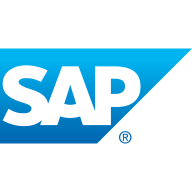

Find out what your peers are saying about Microsoft, Amazon Web Services (AWS), Akamai and others in Infrastructure as a Service Clouds (IaaS).
Top management buy-in is crucial, and conducting an ROI analysis is essential before adoption to ensure the investment aligns with value.
In the last three to four years, whatever we have invested, we have received two to three times back from our investment.
Orders are managed online, integrated with S/4HANA, reducing chances of fraud or communication errors in processes like purchase orders and sales.
I rate the technical support as ten out of ten because there is often a need for continuous technical support.
The availability of knowledgeable support to the implementation partners and the customers could be better.
Regarding support, whenever we are creating a ticket for any problem, we want the solution immediately at the earliest.
SAP Cloud Platform is most suitable for various business needs, allowing easy expansion.
On a scale of one to ten, I'd rate its scalability at nine and a half to ten.
Earlier, we had individual applications, but now everything is migrated to SAP, and it's all on a single platform, making it easier for management to make timely decisions.
If the databases are accurately managed, the solutions and processes are performed quickly and efficiently.
SAP Cloud Platform is pretty stable, although there are occasional rare glitches.
In 2024, we will have migrated to S/4HANA through RISE with SAP.
Allowing more third-party applications to be integrated into the cloud platform would make it easier for customers to adopt SAP Cloud Platform.
SAP Cloud Platform should improve on integrating third-party applications with S/4HANA.
Whatever we want to purchase, it is in lakhs of rupees or crores only.
The cost for SAP Cloud Platform is high as the server is expensive.
SAP is competitive compared to other enterprise solutions like Oracle, though not necessarily cheap.
In GCP, there's a custom configuration feature unlike AWS and Azure.
The main benefits of the SAP Cloud Platform for us are that earlier we had the primary data center at our place, but now we have shifted to the cloud.
The most proficient feature of SAP Cloud Platform is integration for data services linked with Fiori apps.
It converts CapEx into OPEX due to its SaaS model.
| Product | Market Share (%) |
|---|---|
| Google Compute Engine | 1.0% |
| Amazon AWS | 16.9% |
| Microsoft Azure | 13.5% |
| Other | 68.6% |
| Product | Market Share (%) |
|---|---|
| SAP Cloud Platform | 6.4% |
| Microsoft Azure | 17.4% |
| Amazon AWS | 13.8% |
| Other | 62.400000000000006% |


| Company Size | Count |
|---|---|
| Small Business | 5 |
| Midsize Enterprise | 4 |
| Large Enterprise | 7 |
| Company Size | Count |
|---|---|
| Small Business | 15 |
| Midsize Enterprise | 7 |
| Large Enterprise | 25 |
Google Compute Engine delivers virtual machines running in Google's innovative data centers and worldwide fiber network. Compute Engine's tooling and workflow support enable scaling from single instances to global, load-balanced cloud computing.
Compute Engine's VMs boot quickly, come with persistent disk storage, and deliver consistent performance. Our virtual servers are available in many configurations including predefined sizes or the option to create Custom Machine Types optimized for your specific needs. Flexible pricing and automatic sustained use discounts make Compute Engine the leader in price/performance.
SAP Cloud Platform is an integration platform as a service (iPaaS) and PaaS cloud tool. It powers applications that deliver real-time insights to contribute to more effective and timely decision-making. Customers all over the world from different-sized companies use SAP Cloud Platform to build application extensions, integrate landscapes, or extend existing enterprise applications in the cloud.
The platform incorporates innovative technologies, including big data, Internet of Things (IoT), artificial intelligence (AI), and machine learning (ML). SAP Cloud Platform supports native services and products by SAP, as well as partners with popular platforms such as Microsoft Azure, Google Cloud Platform, Amazon AWS, and Alibaba Cloud.
Users of the product can extend, integrate, and develop applications on premises and in the cloud. The product offers flexibility, agility, and scalability, as it enables easy integration and connection of different applications within the platform. The solution is based on open standards and provides a wide range of development tools.
SAP has announced that they are removing SAP Cloud Platform as a brand name and moving its capabilities within SAP Business Technology Platform (SAP BTP). The features of SAP Cloud Platform will be integrated into SAP BTP to assist with data management and analytics, alongside other components of the platform. Existing customers of SAP Cloud Platform will continue to benefit from its products under SAP Integration Suite and SAP Extension Suite.
SAP Cloud Platform Capabilities
The solution offers a wide variety of tools, application capabilities, services, and application programming interface (API). These can be categorized in the following ways:
SAP Cloud Platform Benefits
The platform has many benefits which improve their client’s workflows. They include the following:
Reviews from Real Users
Shylaraj AK, a senior architect at a construction company, describes SAP Cloud Platform as easy to maintain, great features, and helpful support, which attributes to his high rating for the product.
Ehab-El H., chief executive officer at Asis, likes SAP Cloud Platform because it is easy to use with a fast deployment and straightforward setup.
We monitor all Infrastructure as a Service Clouds (IaaS) reviews to prevent fraudulent reviews and keep review quality high. We do not post reviews by company employees or direct competitors. We validate each review for authenticity via cross-reference with LinkedIn, and personal follow-up with the reviewer when necessary.